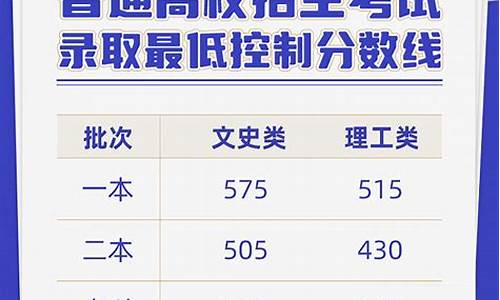您现在的位置是: 首页 > 教育趋势 教育趋势
广东2017英语高考_2017年广东高考英语听说答案
tamoadmin 2024-07-07 人已围观
简介1.2017年广东高考考全国什么卷?2.2017高考英语口语:do的口语用法归纳 2017年高考已经结束了,那么2017年高考总分多少分?各科的总分都是多少?下面是我整理的2017年各省高考总分,希望能给大家带来帮助! 2017年各省高考总分 就全国的形式来讲,大部分地区的总分值还是一样的,如:安徽、北京、福建、甘肃、广东、广西、贵州、河北、河南、黑龙江、湖北、湖南、吉林、江
1.2017年广东高考考全国什么卷?
2.2017高考英语口语:do的口语用法归纳

2017年高考已经结束了,那么2017年高考总分多少分?各科的总分都是多少?下面是我整理的2017年各省高考总分,希望能给大家带来帮助!
2017年各省高考总分
就全国的形式来讲,大部分地区的总分值还是一样的,如:安徽、北京、福建、甘肃、广东、广西、贵州、河北、河南、黑龙江、湖北、湖南、吉林、江西、辽宁、内蒙、宁夏、青海、山东、山西、陕西、四川、天津、西藏、新疆、云南、重庆等27个省市还是750分满分。各科的分值详情如下:语文150分,数学150分,英语150分,文综/理综300分。
个别改革地区的分值详情需要大家做详细的了解,比如江苏、上海、浙江和海南这4个地区:
浙江地区的高考总分:
上海和浙江地区2017年采用的是3+3考试模式,即3门必考科目(语文、数学、英语)+选考科目,我们先来看浙江地区的总分:
其中语文、数学和外语三科满分各为150分,其中英语笔试满分120分,英语听力考试满分30分;综合(文/理)满分300分;自选模块满分60分;技术满分100分,由通用技术和信息技术两科目成绩按各占50%的比例合成。
需要特别提醒大家的是浙江的总分根据大家的选择而有所差异,即考生文化成绩总分按报考(含兼报)的不同考试类别分别合成。文理科一类为“3+综合+自选模块”的总分,满分为810分;二类为“3+综合”的总分,满分为750分;三类为“3+技术”的总分,满分为550分。
上海地区的高考总分:
2017年上海高考成绩满分660分,各科的分值详情是这样的哦:语文、数学(文/理)、外语满分均为150分,政治、历史、地理、物理、化学、生物任选3门:每门70分。
江苏地区的高考总分:
江苏同样采用的是必考+选考模式,其中统考科目为语文、数学、外语三门,各科分值设定为:语文160分,数学160分,外语120分,共440分。语文、数学分别另设附加题40分,总分480分。
选测科目各科满分为120分,按考生成绩分布分为A+、A、B+、B、C、D六个等级。
海南地区的高考总分:
2017年海南的总分以900分的满分当之无愧的位据全国首位,语文、数学(文)、数学(理)、英语等科目的满分值均为150分,其中,英语科分听力和笔试两部分,笔试部分满分值为120分,听力部分满分值为30分,听力成绩计入英语科总分。政治、历史、地理、物理、化学、生物等科目的满分值均为100分,
2017年广东高考考全国什么卷?
1 不定式作宾语
1) 动词+ 不定式
afford, aim, appear, agree, arrange, ask, be, decide, bother, care, choose, come, dare, demand, desire, determine, expect, elect, endeavor, hope, fail, happen, help, hesitate, learn, long, mean, manage, offer, ought, plan, prepare, pretend, promise, refuse, seem, tend, wait, wish, undertake
The driver failed to see the other car in time. 司机没能及时看见另一辆车。
I happen to know the answer to your question. 我碰巧知道你那道问题的答案。
2) 动词+不定式;动词+宾语+不定式
ask, beg, choose, expect, hate, help intend like, love, need prefer, prepare, promise, want, wish
I like to keep everything tidy. 我喜欢每件东西都保持整洁。
I like you to keep everything tidy. 我喜欢你使每件东西都保持整洁。
I want to speak to Tom. 我想和汤姆谈话。
I want you to speak to Tom. 我想让你和汤姆谈话。
3) 动词+疑问词+ to
decide, know, consider forget, learn, remember, show, understand, see, wonder, hear, find out, explain, tell
Please show us how to do that. 请演示给我们如何去做。
There are so many kinds of tape-recorders on sale that I can't make up my mind which to buy.有这么多的录音机,我都拿不定主意买哪一种。
注意
疑问词带不定式在句中作成分时,谓语动词用单数。如:The question is how to put it into practice. 问题是怎样把它付诸实施。
2. 不定式作补语
1) 动词+宾语+不定式(to do)
advise, allow, appoint, believe, cause, challenge, command, compel, consider, declare, drive, enable, encourage, find, forbid, force, guess, hire, imagine, impel, induce, inform, instruct, invite, judge, know, like, order, permit, persuade, remind, report, request, require, select, send, state, suppose, tell, think, train, trust, understand, urge, warn
a.Father will not allow us to play on the street. 父亲不让我们在街上玩耍。
b.We believe him to be guilty. 我们相信他是有罪的。
Find 的特殊用法
Find 后可用分词做宾补,或先加形式宾语,再加形容词,最后加带to 的动词不定式。find后也可带一个从句。此类动词还有get,have。
I found him lying on the ground.
I found it important to learn.
I found that to learn English is important.
典型例题
The next morning she found the man ___ in bed,dead.
A. lying B. lie C. lay D. laying
答案:A.find的宾语后面,用分词或分词短语,起宾语补足语作用。现在分词表达主动,也表达正在进行,过去分词表达被动。
2) to + be 的不定式结构,作补语的动词。
acknowledge, believe, consider, think, declare(声称), discover, fancy(设想), feel, find, guess, judge, imagine, know, prove, see(理解), show, suppose, take(以为), understand
We consider Tom to be one of the best students in our class. 我们认为汤姆是班上的学生之一。
典型例题
Charles Babbage is generally considered ___ the first computer.
A. to invent B. inventing C. to have invented D. having invented
答案:A. 由consider to do sth. 排除B、D。. 此句只说明发明这一个事实,不定式后用原形即可。而C为现在完成时,发明为点动词一般不用完成时,且此处也不强调对现在的影响,因此不选C。
3) to be +形容词
seem, appear, be said, be supposed, be believed, be thought, be known, be reported, hope, wish, desire, want, plan, expect, mean
The book is believed to be uninteresting. 人们认为这本书没什么意思。
4) there be+不定式
believe, expect, intend, like, love, mean, prefer, want, wish, undrstand
We didn't expect there to be so many people there. 我们没料到会有那么多人在哪里。 注意
有些动词需用as 短语做补语,如regard, think believe, take, consider.
We regard Tom as our best teacher. 我们认为汤姆是我们的老师。
Mary took him as her father . 玛丽把他当作自己的父亲。
3. 不定式作主语
1) It's easy (for me) to do that. 我做这事太容易了。
easy, difficult, hard, important, possible, impossible, comfortable, necessary, better; the first, the next, the last, the best, too much, too little, not enough
It's so nice to hear your voice. 听到你的声音真高兴。
It's necessary for you to lock the car when you do not use it. 当你不用车的时候,锁车是有必要的。
2) It's very kind of you to help us. 他帮助我们,他真好。
kind, nice, stupid, rude, clever, foolish, thoughtful, thoughtless, brave, considerate(考虑周到的), silly, selfish(自私的)
It was silly of us to believe him. 我们真愚蠢,竟然相信了他。
It seemed selfish of him not to give them anything. 他不给他们任何东西,这显得太自私了。 注意
1) 其他系动词如,look,appear等也可用于此句型
2) 不定式作为句子成分时,动词用单数形式。
3) 当不定式作主语的句子中又有一个不定式作表语时,不能用It is? to?的句型
(对)To see is to believe. 百闻不如一见。(错)It is to believe to see.
It's for sb.和 It's of sb.
1) for sb. 常用于表示事物的特征特点,表示客观形式的形容词,如easy, hard, difficult, interesting, impossible等:
It's very hard for him to study two languages. 对他来说学两门外语是很难的。
2) of sb的句型一般用表示人物的性格,品德,表示主观感情或态度的形容词,如good, kind, nice, clever, foolish, right。
It's very nice of you to help me. 你来帮助我,你真是太好了。
for 与of 的辨别方法
用介词后面的代词作主语,用介词前边的形容词作表语,造个句子。如果道理上通顺用of,不通则用for。如:You are nice. (通顺,所以应用of)。He is hard. (人是困难的,不通,因此应用for。)
4. 不定式作表语
不定式可放在be动词后面,形成表语。例如:
My work is to clean the room every day.
His dream is to be a doctor.
5. 不定式作定语
不定式做定语通常要放在被修饰的词后。例如:
I have a lot of work to do.
So he made some candles to give light.
6. 不定式作状语
1) 目的状语
To? only to (仅仅为了), in order to, so as to, so(such)? as to? (如此?以便?) He ran so fast as to catch the first bus. 他飞快地跑以便赶上第一班车。
I come here only to say good-bye to you. 我来仅仅是向你告别。
2) 作结果状语,表事先没有预料到的,要放在句子后面。
What have I said to make you angry.
He searched the room only to find nothing.
3) 表原因
I'm glad to see you.
典型例题
The chair looks rather hard, but in fact it is very comfortable to ___.
A. sit B. sit on C. be seat D. be sat on
答案:B. 如果不定式为不及物动词,其后应有必要的介词。当动词与介词连用时,常位于"形容词+动词不定式"结构的末尾。
用作介词的to
to 有两种用法:一为不定式+动词原形; 一为介词+名词/动名词, to 在下面的用法中是第二种,即to+ 名词/动名词:admit to承认,confess to承认,be accustomed to 习惯于,be used to 习惯于,stick to 坚持,turn to开始,着手于,devote oneself to 献身于,be devoted to 致力于, look forward to 盼望,pay attention to
注意
省to 的动词不定式
1) 情态动词 ( 除ought 外,ought to):
2) 使役动词 let, have, make:
3) 感官动词 see, watch, look at, notice , observe, hear, listen to, smell, feel, find 等后作宾补,省略to。
注意
在被动语态中则to 不能省掉。
I saw him dance. =He was seen to dance.
The boss made them work the whole night.=They were made to work the whole night.
4) would rather,had better:
5) Why? / why not?:
6) help 可带to,也可不带to, help sb (to) do sth:
7) but和except:but前是动词do时,后面出现的动词用不带to的动词不定式。
8) 由and, or和than连接的两个不定式,第二个to 可以省去:
9) 通常在discover, imagine, suppose, think, understand等词后,可以省去to be:He is supposed (to be) nice. 他应该是个好人。举例:He wants to move to France and marry the girl. He wants to do nothing but go out. 比较:He wants to do nothing but go out. He wants to believe anything but to take the medicine.
典型例题
1) ---- I usually go there by train.
---- Why not ___ by boat for a change?
A. to try going B. trying to go C. to try and go D. try going
答案:D. why not 后面接不带to 的不定式,因此选D。
2) Paul doesn't have to be made ___. He always works hard.
A. learn B. to learn C. learned D. learning
答案:B. make后接不带to 的动词不定式,当其用于被动时,to 不可省略。
动词不定式的否定式
Tell him not to shut the window?
She pretended not to see me when I passed by. 我走过的时候,她假装没看见。
典型例题
1) Tell him ___ the window.
A. to shut not B. not to shut C. to not shut D. not shut
答案:B。 tell sb to do sth 的否定形式为tell sb not to do sth.
2) She pretended ___ me when I passed by.
A. not to see B. not seeing C. to not see D. having not seen
答案:A。 pretend 后应接不定式。其否定形式为pretend not to do sth.。
3) Mrs. Smith warned her daughter ___ after drinking.
A. never to drive B. to never driver C. never driving D. never drive
答案:A。warn sb to do sth. 的否定形式为warn sb not to do sth. 此处用的是否定词never.
4) The boy wanted to ride his bicycle in the street,but his mother told him ____.
A. not to B. not to do C. not do it D. do not to
答案:A。not to 为not to do it 的省略形式。可以只用to这个词,而不必重复整个不定式词组。及物动词do后应有名词、代词等,否则不对,因此B,D不对。
5) The patient was warned ___ oily food after the operation.
A. to eat no B. eating not C. not to eat D. not eating
答案:C。warn一词要求后用不定式,此处为不定式的被动,否定形式为be warned not to do。 不定式的特殊句型too?to?
1) too?to 太?以至于?
He is too excited to speak. 他太激动了,说不出话来。
---- Can I help you ? 需要我帮忙吗?
---- Well, I'm afraid the box is too heavy for you to carry it, but thank you all the same. 不用了。这箱子太重,恐怕你搬不动。谢谢您。
2) 如在too前有否定词,则整个句子用否定词表达肯定, too 后那个词表达一种委婉含义,意 为"不太"。
It's never too late to mend. (谚语) 改过不嫌晚。
3) 当too 前面有only, all, but时,意思是:非常? 等于very。
I'm only too pleased to be able to help you. 我非常高兴能帮助你。
He was but too eager to get home. 他非常想回家。
不定式的特殊句型so as to
1) 表示目的;它的否定式是so as not to do。
Tom kept quiet about the accident so as not to lose his job. 汤姆对事故保持沉默是为了不丢掉他的工作。
Go in quietly so as not to wake the baby. 轻点进去,别惊醒了婴儿。
2) so kind as to ---劳驾
Would you be so kind as to tell me the time? 劳驾,现在几点了。
不定式的特殊句型Why not
"Why not +动词原形"表达向某人提出建议,翻译为:"为什么不" "干吗不"
例如:Why not take a holiday? 干吗不去度假?
2017高考英语口语:do的口语用法归纳
2017年广东高考考全国乙卷。
全国乙卷使用情况:
2015年以前使用省份:河南河北山西陕西(语文及综合)湖北(综合)江西(综合)湖南。
2015年增加使用省份:江西(语文数学英语)、山东(英语)。
2016年增加省份:湖南(语文数学英语综合)、湖北(语文数学英语)、广东、福建、安徽、山东(综合)。
2017年增加省份:浙江(英语)。
2018年高考增加使用新课标一卷省份:山东(语文,数学)。
2018年使用省区:安徽、湖北、福建、湖南、山西、河北、江西、广东、河南、山东、浙江(英语听力部分)。
扩展资料:
一、全国甲卷使用情况:
2016年增加省份:陕西、重庆。取消省份:广西、云南、贵州。
2018年使用省区:甘肃、青海、黑龙江、吉林、辽宁、宁夏、新疆、内蒙古、陕西、重庆、海南、西藏。
二、全国丙卷使用情况:
2016年,广西、贵州、云南考生使用丙卷。其他省份还保持原来的甲卷(全国II卷)与乙卷(全国I卷)使用情况不变。
2018年使用省区:广西、贵州、云南、四川。
参考资料:
高考英语口语:do的口语用法归纳
一、do sb a favour的用法
该结构表示“帮助某人”,也可说成do a favour for sb,注意其中有不定冠词。如:Would you do me a favour please? 请你帮我个忙,好吗?t; mso-char-indent-count: 2.0">He is always ready to do a favour for his classmates. 他总是乐于帮助同学。以下各句均可表示“劳驾请把窗户打开”。注意,当 favour 后有定语修饰时,其前习惯上要用定冠词: Do me a favour and open the window. Do me a favour by opening the window. Do me a favour—open the window, please. Do me the favour to open the window. Do me the favour of opening the window.
二、do sb good的用法
该结构表示“对某人有益或有好处”,其中的 good 为不可数名词。如: Exercise will do you good. 运动对你会有好处。Eat more fruit—it will do you good. 多吃水果,这对你有好处。A week’s vacation will do you a lot of good. Go on with the treatment. It is doing you good. 你要继续进行这种疗法。它对你是有效的。
三、do sb harm 的用法
该结构表示“对某人有害”,其中的 harm 为不可数名词。如:Smoking does harm to your health. 吸烟对你的身体有害。A few late nights never did anyone any harm. 熬几个晚上的夜对人绝无害处。Whether it will do us harm remains to be seen. 是否对我们有害还要看一看。Whether it will注:也可说成 do harm to sb。如:Such books do great harm to young people.=Such books do young people great harm. 那样的书对年青人危害很大。
四、do sb honour 的用法
该结构也可说成do honour to sb,它有以下两个方面的意思:1. 对某人表示敬意或纪念。如:They did honour to the dead. 他们向死者致敬。2. 给某人带来荣誉或使某人受到尊敬。如: His contributions to science do honour to our country. 他在科学上的贡献为祖国增了光。We attended his birthday party to do him honour. /We attended his birthday party to do honour to him. 我们参加了他的生日晚会以表示对他的敬意。注意:do sb the honour of doing [to do] sth 的意思是do sb the honour of doing [to do] sth “给某人面子做某事”“给某人做某事的荣幸”。如:Would you do me the honour of dancing with me?=Would you do me the honour to dance with me? 能请你跳曲舞吗?
五、do sb a kindness的用法
该结构表示“好心地为某人做某事”“帮某人的忙”,其中的 kindness 为可数名词。如:Will you do me a kindness? 你愿帮我个忙吗?He has done me many kindness. 他帮了我不少忙。
六、do sb a service的用法
该结构表示“帮某人的忙”,注意其中有不定冠词。如:Will you do me a service? 帮我个忙好吗? You did me a great service by telling me the truth. 你把实情告诉我,这对我很有好处。
七、do sb wrong的用法该结构表示“冤枉某人”“冤屈某人”,wrong 前通常不用冠词,但若有形容词修饰,也可用不定冠词修饰。如:You did me wrong. 你冤枉我了。You did me wrong. He did her a terrible wrong. 他真的是太冤屈她了









